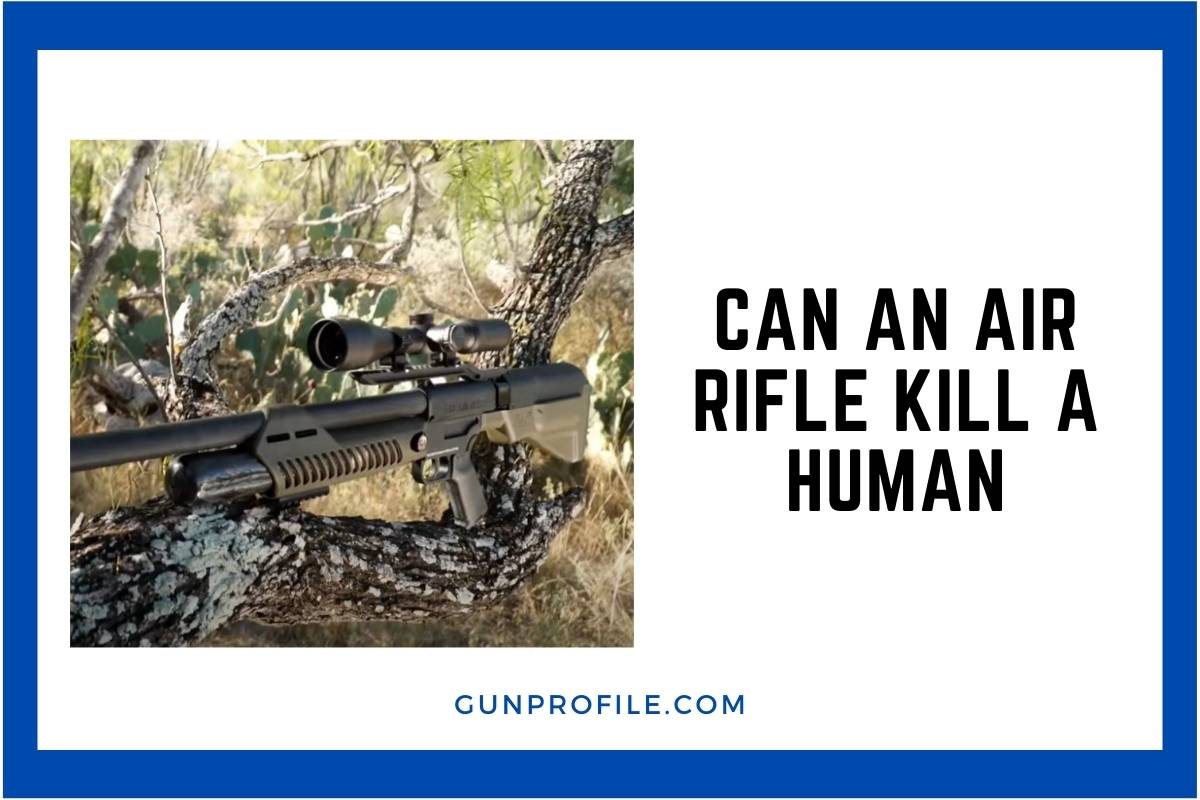Air rifles are often seen as harmless toys or tools for sports, but their ability to cause serious harm is a topic of concern. An air rifle can indeed kill a human, especially with a well-placed shot to a vital area. Many people underestimate the power behind these air-powered guns, mistakenly believing they are safe for casual use.
Understanding the mechanics and potential dangers associated with air rifles is crucial. With advancements in design, some models can achieve speeds comparable to traditional firearms, posing a risk of severe injury or even fatality. The discussion around their lethality also brings up important points about responsible use and appropriate safety measures for both users and bystanders.
Awareness of air rifle capabilities can help prevent tragic accidents and promote safer practices. It is vital to address the myths surrounding these weapons to ensure a responsible approach to their use.
Key Takeaways
- Air rifles can be lethal if they hit vital organs.
- Understanding air rifle power helps promote safer practices.
- Awareness of risks can prevent accidents and injuries.
Mechanisms of Air Rifle Functionality
Air rifles operate by utilizing compressed air or gas to propel projectiles. Understanding how these mechanisms work is crucial for comprehending their potential impact.
Types of Air Rifles
Air rifles come in several types, each with unique mechanisms. The main types include:
- Spring-Piston Air Rifles: These use a coiled spring to compress air. When the trigger is pulled, the spring releases, pushing a piston forward to compress the air, which propels the pellet.
- Pre-Charged Pneumatic (PCP) Rifles: These require pre-filled compressed air tanks. They deliver consistent power and can fire multiple shots before needing to be refilled.
- CO2 Air Rifles: These use pressurized carbon dioxide gas stored in cartridges. They are typically used in recreational shooting but offer less power than PCP rifles.
Each type has distinct advantages and disadvantages when considering performance and usability.
Projectile Velocity and Energy Transfer
The speed at which the projectile leaves the barrel is critical for understanding air rifle performance. This speed, known as projectile velocity, affects how much energy is transferred on impact.
- Velocity: Most air rifles can achieve projectile velocities between 600 to 1,200 feet per second. Higher velocity often means greater energy, resulting in more damage.
- Energy Transfer: Energy is measured in foot-pounds (FPE). An air rifle with a higher FPE can cause more serious injuries. For example, the U.S. Army’s standards consider an air rifle lethal if it reaches at least 58 FPE.
Thus, velocity and energy transfer are essential factors in determining the effectiveness and potential danger of an air rifle.
Ballistic Properties and Lethality
Air rifles can have significant lethality, depending on their ballistic properties. Understanding these factors is essential for assessing their potential to cause harm.
Factors Influencing Penetrative Power
Several key factors determine the penetrative power of an air rifle.
- Velocity: The faster the projectile travels, the more energy it carries upon impact. High-velocity air rifles can achieve speeds over 1000 feet per second.
- Projectile Type: Different shapes and weights of pellets can influence how deeply they penetrate. For example, domed pellets tend to be more effective for accuracy and penetration.
- Caliber: The diameter of the projectile can affect how much tissue it displaces. Larger calibers may create more damage on impact.
- Distance: The range at which a shot is fired can affect the projectile’s energy. Energy decreases over distance, impacting its effectiveness.
Each of these factors plays a role in whether an air rifle can be lethal when used intentionally.
Comparative Lethality to Firearms
When comparing air rifles to firearms, it is crucial to recognize the differences in lethality.
Air rifles can be powerful, but they generally do not match the lethality of traditional firearms.
- Energy Levels: A projectile requires at least 58 foot-pounds of energy to be considered potentially lethal. Most high-powered air rifles can reach this threshold.
- Injury Potential: High-velocity air weapons can cause serious injuries, similar to certain small caliber firearms. They can cause fatal injuries especially when striking vital areas.
Despite this risk, firearms usually have higher velocities and energies, leading to a greater killing potential. Understanding these differences is vital for anyone handling or considering the use of an air rifle.
Historical and Modern Use Cases
Air rifles have a long history of use that spans different purposes and applications. Their capabilities have evolved, leading to both recreational and serious uses. Understanding these use cases provides insight into their potential impact.
Recreational Shooting
Recreational shooting with air rifles is popular, especially for beginners. These guns are often seen as safe alternatives to firearms. They offer an accessible entry point for those interested in marksmanship.
Air rifles can be used in backyards, shooting ranges, or competitions. Participants engage in target shooting, which helps improve aiming skills and hand-eye coordination. Safety remains a priority, with many enthusiasts advocating for responsible handling.
Benefits:
- Lower cost of ammunition.
- Reduced noise compared to firearms.
Although these rifles can cause injuries, most people use them safely for fun and skill-building.
Hunting and Pest Control
Air rifles have also gained prominence in hunting for small game and pest control. They are effective when used correctly and can humanely dispatch animals at limited ranges.
Modern air rifles, often featuring high velocity, can penetrate small targets like squirrels and rabbits. Many models are designed for hunters, combining power and accuracy. This capability makes them a practical choice for controlling pest populations in gardens and agricultural areas.
Key Points:
- Effective for small game.
- Environmentally friendly options available.
Users must stay aware of local regulations regarding hunting with air rifles.
Competitive Sports
Air rifles play a significant role in competitive shooting sports. Events such as the Olympics feature air rifle shooting as an official discipline. Athletes worldwide train rigorously to perfect their craft.
Competitions focus on precision and consistency, requiring remarkable skill from participants. Rules dictate the specifications of air rifles used, including weight and velocity limits. This standardization elevates the sport and fosters a fair competitive environment.
Notable Events:
- Olympic Games
- National Championships
Competitors use air rifles to hit targets at various distances, demonstrating both their abilities and the rifle’s performance.
Legal and Ethical Considerations
Air rifle ownership and use come with important legal and ethical responsibilities. Knowing the laws in your area and following best safety practices can prevent accidents and ensure responsible usage.
Ownership and Usage Laws
Air rifle regulations can vary greatly from one location to another. In many regions, air rifles are classified as firearms, while in others, they may not require a license.
Key legal factors to consider include:
- Age Restrictions: Many places set a minimum age for ownership and usage.
- Permit Requirements: Some areas may require owners to obtain a permit.
- Hunting Regulations: Specific laws govern hunting with air rifles, including licensing and permitted game.
Fines and penalties often exist for illegal possession or unsafe usage. It is crucial for owners to research local laws thoroughly to ensure compliance.
Safety Best Practices
Safety is paramount when handling air rifles. Proper practices can greatly reduce the risk of injury. Here are some essential guidelines:
- Always Treat as Loaded: Assume an air rifle is loaded at all times.
- Use Proper Safety Gear: Wearing eye protection can prevent serious injuries.
- Follow Range Rules: If using at a shooting range, adhere to all posted rules.
Additionally, safe storage is critical. Keeping air rifles in a locked cabinet or safe helps prevent unauthorized access. Regular maintenance checks can also ensure the rifle remains in good condition.
Preventive Measures and Risk Management
Proper preventive measures and effective risk management are crucial for ensuring the safe use of air rifles. By emphasizing education and training as well as regular air rifle maintenance, users can significantly reduce the likelihood of accidents and injuries.
Education and Training
Education and training are essential for anyone handling air rifles. Knowing the basic safety rules can prevent many accidents. Key aspects include:
- Understanding Safety Protocols: Users should learn key safety rules like always treating an air rifle as if it were loaded. This mindset helps prevent misuse.
- Proper Handling Techniques: Training should cover how to hold, aim, and fire an air rifle safely. Familiarity with these techniques is crucial for minimizing risks.
- Emergency Response Preparation: Knowing how to respond in case of an accident is vital. Training should include first aid skills and how to seek help.
Comprehensive training should be provided by certified instructors to ensure safe practices are instilled.
Air Rifle Maintenance
Regular air rifle maintenance is fundamental for safety and functionality. A well-maintained rifle operates reliably and helps prevent accidents. Important maintenance practices include:
- Regular Inspections: Users should frequently check for signs of wear, such as damaged seals or rust. Identifying these issues early can prevent malfunctions.
- Cleaning: Keeping the firing mechanism and barrel clean improves performance. Dirt or debris can affect accuracy and safety.
- Proper Storage: Air rifles should be stored correctly, preferably in a locked cabinet. This practice minimizes access to unauthorized users, particularly children.
These maintenance tasks should be part of a routine that every air rifle owner follows to ensure safe use.
Frequently Asked Questions
This section addresses common questions about the potential dangers of air rifles, focusing on their lethality, risk of injury, and specific incidents related to their use. Each question delves into important aspects that can inform safe handling and awareness.
What is the minimum fps from a pellet gun that can be lethal to humans?
The minimum velocity for an air rifle pellet to potentially be lethal varies, but generally, velocities over 800 feet per second (fps) increase the risk of serious injury or death. Higher speed increases the impact force significantly, making penetration more likely.
Are there any recorded incidents of fatalities caused by pellet guns?
Yes, there have been recorded incidents where pellet guns have caused fatalities. These events often involve misuse or accidents, highlighting the importance of safe handling practices.
Is it possible for an air rifle to penetrate human skin?
Air rifles can penetrate human skin, especially at higher velocities. The type of pellet and the distance from which it is fired also play a role in this potential.
What are the potential risks of injury when handling an air rifle?
Handling an air rifle can pose risks such as eye injuries, skin punctures, or more severe trauma if the rifle is misused. Proper safety measures are vital to minimize these risks during use.
Can air rifles cause enough harm to be considered lethal?
Air rifles can indeed cause harm that is potentially lethal, especially under certain conditions. Direct hits to vital areas or improper use can lead to serious injuries or death.
Under what circumstances could an air rifle be dangerous to humans?
An air rifle can be dangerous in situations where it is used recklessly, shot at close range, or mishandled. Accidental shootings or intentional misuse are particularly hazardous scenarios.

